-
 Bitcoin
Bitcoin $115200
0.74% -
 Ethereum
Ethereum $3730
6.71% -
 XRP
XRP $3.075
4.85% -
 Tether USDt
Tether USDt $1.000
0.01% -
 BNB
BNB $766.1
1.85% -
 Solana
Solana $168.7
4.22% -
 USDC
USDC $0.9999
0.00% -
 Dogecoin
Dogecoin $0.2097
5.42% -
 TRON
TRON $0.3327
1.72% -
 Cardano
Cardano $0.7547
4.04% -
 Stellar
Stellar $0.4156
4.83% -
 Hyperliquid
Hyperliquid $38.77
1.37% -
 Sui
Sui $3.589
4.15% -
 Chainlink
Chainlink $17.09
4.86% -
 Bitcoin Cash
Bitcoin Cash $574.6
5.82% -
 Hedera
Hedera $0.2523
1.95% -
 Avalanche
Avalanche $23.01
7.68% -
 Ethena USDe
Ethena USDe $1.001
-0.02% -
 Litecoin
Litecoin $120.4
9.83% -
 Toncoin
Toncoin $3.426
-4.06% -
 UNUS SED LEO
UNUS SED LEO $8.918
-0.53% -
 Shiba Inu
Shiba Inu $0.00001250
2.49% -
 Uniswap
Uniswap $9.956
8.52% -
 Polkadot
Polkadot $3.724
3.26% -
 Monero
Monero $304.7
0.19% -
 Dai
Dai $0.9999
-0.01% -
 Bitget Token
Bitget Token $4.394
1.48% -
 Cronos
Cronos $0.1400
6.96% -
 Pepe
Pepe $0.00001076
2.83% -
 Aave
Aave $268.4
3.45%
What is the creation and issuance process of NFT?
Creating an NFT involves conceptualizing the digital asset, choosing a blockchain, minting it using smart contracts, selecting a marketplace, and optionally listing it for sale, all while considering factors like gas fees and metadata.
Feb 28, 2025 at 11:24 pm
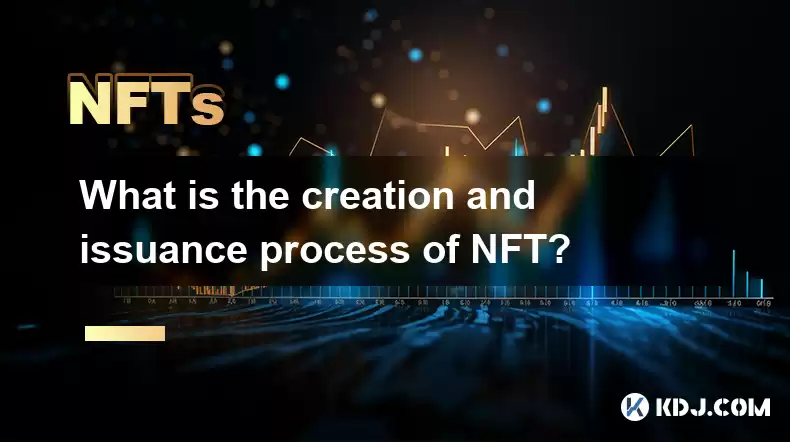
What is the Creation and Issuance Process of NFTs?
Key Points:
- Concept and Design: The process begins with conceptualizing the NFT and its intended utility. This includes determining the artwork, collectible, or other digital asset to be tokenized, as well as its intended functionality within a specific ecosystem. Significant thought should be given to the metadata associated with the NFT, as this metadata is crucial for its identification and verification.
- Choosing a Blockchain: Selecting the appropriate blockchain is paramount. Different blockchains offer varying levels of scalability, transaction fees, and community support. Factors such as gas fees (transaction costs) and the blockchain's overall security and reputation should be carefully considered.
- Creating the Digital Asset: This involves the actual creation of the artwork, video, audio, or other digital asset. High-resolution files are essential for optimal display and resale value. Consider also the file format, ensuring compatibility with the chosen blockchain and marketplace.
- Minting the NFT: This step involves transforming the digital asset into an NFT on the selected blockchain. This requires the use of specialized software and tools, often involving smart contracts that define the NFT's properties, ownership, and any associated functionalities.
- Selecting a Marketplace: Once minted, the NFT needs a platform for sale or distribution. Various NFT marketplaces offer different fees, features, and target audiences. Choosing the right marketplace depends on the type of NFT, its target audience, and the desired level of exposure.
- Listing and Selling (Optional): If the intention is to sell the NFT, it needs to be listed on the chosen marketplace. This usually involves setting a price, creating a listing description, and potentially including additional information to attract buyers.
Detailed Steps:
- Concept and Design: The genesis of any NFT lies in its conceptualization. This is far more than simply creating a picture; it involves a deep understanding of the NFT's intended purpose and its value proposition within the broader cryptocurrency ecosystem. Consider, for example, whether the NFT is purely a collectible, a piece of digital art with intrinsic artistic merit, or a utility token granting access to exclusive content, experiences, or communities. The design phase necessitates thorough research into the target audience. What kind of art resonates with them? What functionalities would they find valuable? What level of scarcity is desirable to maximize the NFT's potential value? The metadata associated with the NFT is also crucial during this phase. This metadata – essentially a set of data tags describing the NFT – is embedded within the token itself and serves as its digital fingerprint. It includes information such as the artist's name, the title of the artwork, the date of creation, and any other relevant details. This information is essential for verifying the authenticity and provenance of the NFT, protecting it from counterfeiting, and ensuring its accurate representation across different platforms. Thorough planning at this stage significantly impacts the NFT's success and market value. A poorly conceived NFT, regardless of its aesthetic appeal, will likely struggle to attract buyers or achieve significant market recognition.
- Choosing a Blockchain: The selection of the underlying blockchain is a critical decision. Different blockchains offer diverse functionalities, strengths, and weaknesses, influencing factors like transaction fees, scalability, and security. Ethereum, for instance, has long been the dominant platform for NFTs, benefiting from a large, established community and extensive developer tooling. However, its high gas fees can be prohibitive for some creators and buyers. Other blockchains, such as Solana, Tezos, and Polygon, offer lower transaction costs and faster transaction speeds, making them attractive alternatives. However, they may have smaller communities and potentially less established infrastructure. Each blockchain has its own unique characteristics regarding transaction speed, cost, security, and scalability. Understanding these differences is crucial for making an informed decision that aligns with the NFT's goals and the creator's budget. Factors such as the blockchain's energy consumption (environmental impact) and the level of decentralization should also be considered. Ultimately, the choice of blockchain will influence the accessibility, cost-effectiveness, and overall success of the NFT project.
- Creating the Digital Asset: This stage involves the actual creation of the digital artwork, video, audio, or other asset that will form the core of the NFT. The quality of the digital asset is paramount. High-resolution files are essential for optimal display on various platforms and to maintain the NFT's visual appeal over time. Poor quality can significantly diminish the NFT's perceived value and attractiveness to potential buyers. The file format also needs careful consideration, ensuring compatibility with the chosen blockchain and NFT marketplace. Common file formats include JPEG, PNG, GIF, MP4, and others. The selection depends on the nature of the digital asset and the requirements of the platform on which it will be hosted. Moreover, the creation process may involve the use of specialized software and tools depending on the complexity and type of the digital asset. For example, creating a 3D model for an NFT might require advanced 3D modeling software and expertise, while creating a simple image might only require readily available image editing software. This stage is crucial for establishing the aesthetic appeal and overall quality of the NFT, directly impacting its marketability and potential value.
- Minting the NFT: Minting is the process of creating the NFT on the chosen blockchain. This involves using specialized software and tools to transform the digital asset into a unique, verifiable token on the blockchain. This process usually involves the use of smart contracts. Smart contracts are self-executing contracts with the terms of the agreement between buyer and seller directly written into lines of code. These contracts define the NFT's properties, such as its ownership, metadata, and any associated functionalities. The minting process often involves paying a transaction fee (gas fee) to the blockchain network to register the NFT on the blockchain. The exact process for minting an NFT varies depending on the chosen blockchain and the tools used. Some platforms offer user-friendly interfaces that simplify the minting process, while others require more technical expertise. The minting process ensures the NFT's uniqueness and verifiability, establishing its authenticity and preventing duplication. It's a crucial step in transforming a digital asset into a tradable and verifiable digital asset on the blockchain.
- Selecting a Marketplace: Once the NFT is minted, it needs a platform for sale or distribution. Numerous NFT marketplaces exist, each offering a range of features, fees, and target audiences. Choosing the right marketplace is crucial for maximizing the NFT's visibility and potential for sales. Factors to consider include the marketplace's reputation, transaction fees, user base, and the types of NFTs it supports. Some marketplaces specialize in specific types of NFTs, such as digital art, collectibles, or gaming items. Others offer a broader range of NFTs. The marketplace's user interface, security features, and customer support are also important considerations. A user-friendly interface can make the listing and selling process smoother, while robust security features protect both the creator and buyer. Careful research and comparison of different marketplaces are essential to ensure the selection aligns with the NFT's characteristics and the creator's goals. The choice of marketplace can significantly influence the NFT's reach, sales potential, and overall success.
- Listing and Selling (Optional): If the creator intends to sell the NFT, it needs to be listed on the chosen marketplace. This involves setting a price, creating a compelling listing description, and including any additional information to attract potential buyers. The pricing strategy is crucial, balancing the NFT's perceived value with market demand. The listing description should highlight the NFT's unique features, its artistic merit, and its potential utility. High-quality images and videos are essential for showcasing the NFT's aesthetic appeal. The creator may also want to include information about the NFT's provenance, its creation process, and any associated intellectual property rights. Promoting the NFT through social media and other channels can help increase its visibility and attract potential buyers. The listing and selling process on different marketplaces may vary, so understanding the specific requirements of the chosen platform is essential. Effective marketing and communication are key to achieving successful sales and maximizing the NFT's market value.
FAQs:
Q: What are the different types of NFTs?
A: NFTs can represent various digital assets, including but not limited to digital art (images, videos, animations), collectibles (virtual trading cards, in-game items), music, videos, and even virtual real estate within metaverse platforms. The possibilities are constantly expanding as technology evolves.
Q: How are NFTs different from other digital assets?
A: NFTs leverage blockchain technology to provide verifiable proof of ownership and authenticity. Unlike traditional digital assets that can be easily copied and duplicated, NFTs are unique and verifiable tokens on the blockchain, making them non-fungible (not interchangeable).
Q: What are gas fees, and how do they affect NFT creation and sales?
A: Gas fees are transaction fees paid to the blockchain network to process transactions, including minting and trading NFTs. These fees vary depending on the blockchain's network congestion and can significantly impact the cost of creating and selling NFTs.
Q: What are smart contracts in the context of NFTs?
A: Smart contracts are self-executing contracts with the terms of the agreement between buyer and seller directly written into lines of code. They automate the process of transferring ownership and executing other pre-defined actions related to the NFT, such as royalty payments to the creator upon resale.
Q: What are some popular NFT marketplaces?
A: Several popular NFT marketplaces exist, each with its strengths and weaknesses. Examples include OpenSea, Rarible, SuperRare, and Foundation. The best choice depends on the type of NFT, target audience, and desired level of exposure.
Q: What are the risks associated with creating and selling NFTs?
A: Risks include market volatility (NFT prices can fluctuate significantly), platform security vulnerabilities (potential for theft or loss of NFTs), and legal complexities related to intellectual property rights. Thorough research and due diligence are crucial to mitigate these risks.
Q: How can I learn more about creating and selling NFTs?
A: Numerous online resources, tutorials, and communities exist to provide guidance on creating and selling NFTs. Researching specific blockchains, NFT marketplaces, and smart contract development is essential for a comprehensive understanding of the process.
Disclaimer:info@kdj.com
The information provided is not trading advice. kdj.com does not assume any responsibility for any investments made based on the information provided in this article. Cryptocurrencies are highly volatile and it is highly recommended that you invest with caution after thorough research!
If you believe that the content used on this website infringes your copyright, please contact us immediately (info@kdj.com) and we will delete it promptly.
- Cryptocurrency, Altcoins, and Profit Potential: Navigating the Wild West
- 2025-08-04 14:50:11
- Blue Gold & Crypto: Investing Disruption in Precious Metals
- 2025-08-04 14:30:11
- Japan, Metaplanet, and Bitcoin Acquisition: A New Era of Corporate Treasury?
- 2025-08-04 14:30:11
- Coinbase's Buy Rating & Bitcoin's Bold Future: A Canaccord Genuity Perspective
- 2025-08-04 14:50:11
- Coinbase's Buy Rating Maintained by Rosenblatt Securities: A Deep Dive
- 2025-08-04 14:55:11
- Cryptos, Strategic Choices, High Returns: Navigating the Meme Coin Mania
- 2025-08-04 14:55:11
Related knowledge
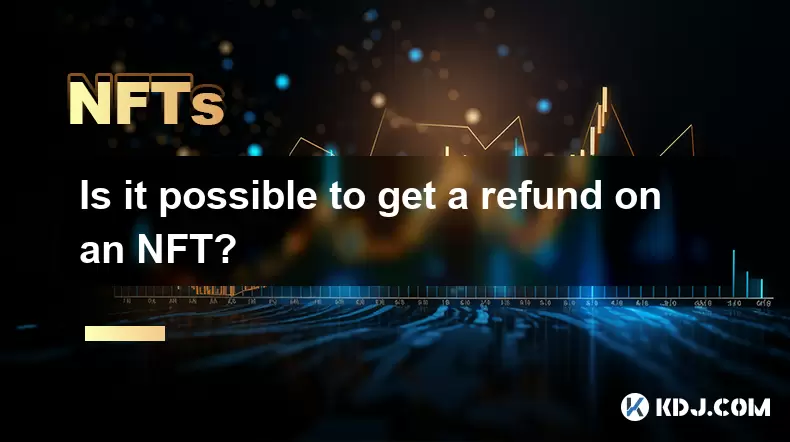
Is it possible to get a refund on an NFT?
Jul 21,2025 at 08:35pm
Understanding NFT Transactions and RefundsWhen you purchase an NFT (Non-Fungible Token), the transaction is typically recorded on a blockchain, making...
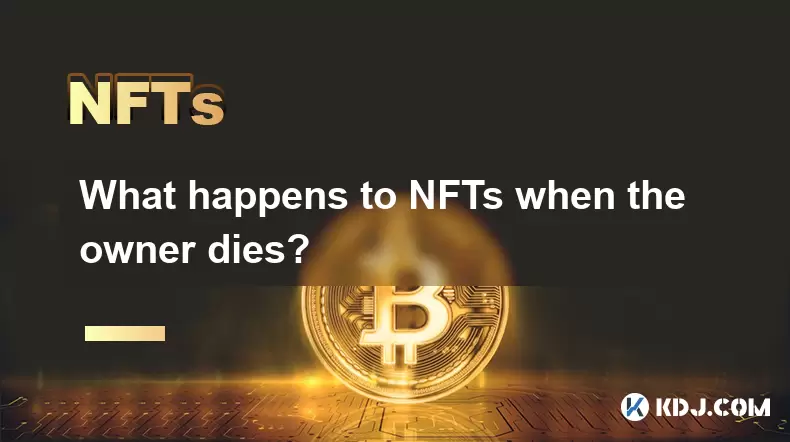
What happens to NFTs when the owner dies?
Jul 22,2025 at 02:43pm
Legal Ownership and Digital AssetsWhen an individual owns NFTs, the question of what happens to these assets upon their death is a pressing one. NFTs ...
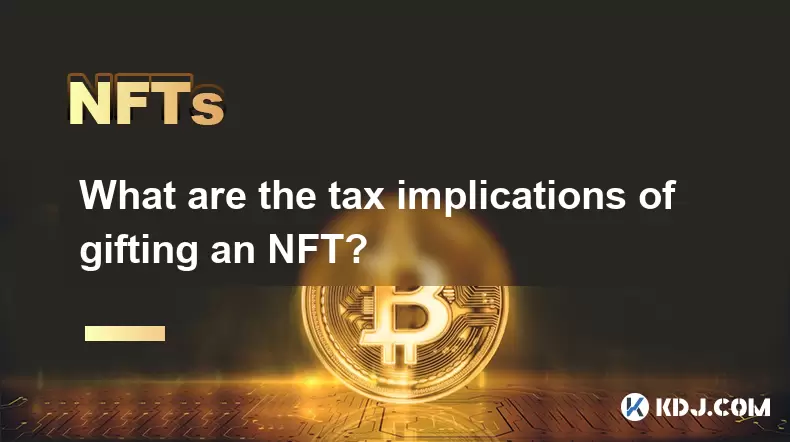
What are the tax implications of gifting an NFT?
Jul 19,2025 at 04:21am
Understanding the Basics of NFT GiftingGifting a Non-Fungible Token (NFT) involves transferring ownership from one individual to another without recei...
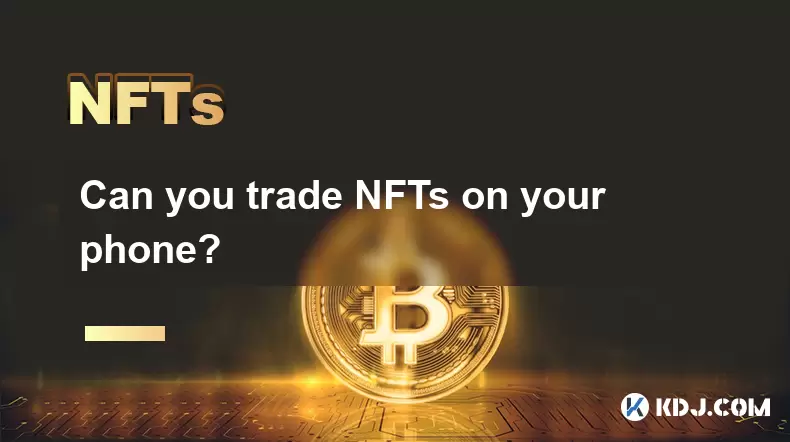
Can you trade NFTs on your phone?
Jul 18,2025 at 04:29am
Trading NFTs on Mobile DevicesYes, you can trade NFTs on your phone, and the process has become increasingly streamlined thanks to a variety of mobile...
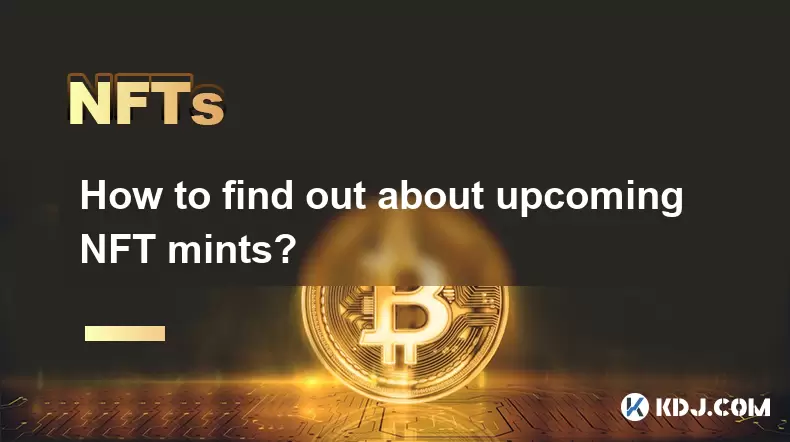
How to find out about upcoming NFT mints?
Jul 18,2025 at 11:50am
Exploring NFT Minting OpportunitiesUnderstanding the landscape of upcoming NFT mints is crucial for collectors, investors, and creators who wish to st...
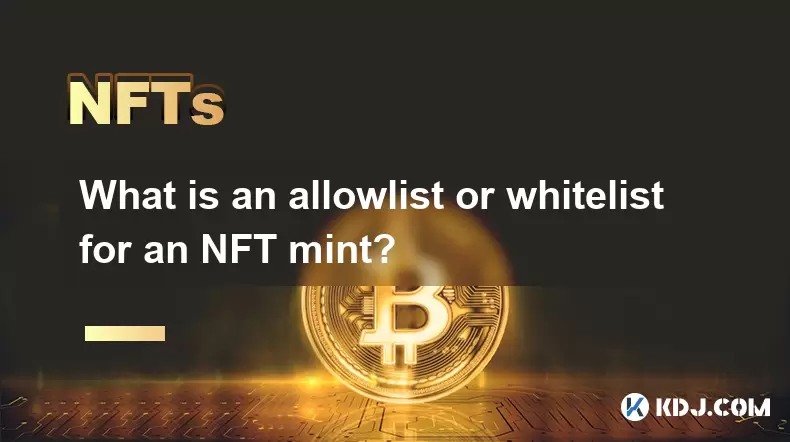
What is an allowlist or whitelist for an NFT mint?
Jul 20,2025 at 07:14pm
Understanding the Concept of an Allowlist for NFT MintingAn allowlist, also commonly referred to as a whitelist, is a mechanism used in the NFT mintin...

Is it possible to get a refund on an NFT?
Jul 21,2025 at 08:35pm
Understanding NFT Transactions and RefundsWhen you purchase an NFT (Non-Fungible Token), the transaction is typically recorded on a blockchain, making...

What happens to NFTs when the owner dies?
Jul 22,2025 at 02:43pm
Legal Ownership and Digital AssetsWhen an individual owns NFTs, the question of what happens to these assets upon their death is a pressing one. NFTs ...

What are the tax implications of gifting an NFT?
Jul 19,2025 at 04:21am
Understanding the Basics of NFT GiftingGifting a Non-Fungible Token (NFT) involves transferring ownership from one individual to another without recei...

Can you trade NFTs on your phone?
Jul 18,2025 at 04:29am
Trading NFTs on Mobile DevicesYes, you can trade NFTs on your phone, and the process has become increasingly streamlined thanks to a variety of mobile...

How to find out about upcoming NFT mints?
Jul 18,2025 at 11:50am
Exploring NFT Minting OpportunitiesUnderstanding the landscape of upcoming NFT mints is crucial for collectors, investors, and creators who wish to st...

What is an allowlist or whitelist for an NFT mint?
Jul 20,2025 at 07:14pm
Understanding the Concept of an Allowlist for NFT MintingAn allowlist, also commonly referred to as a whitelist, is a mechanism used in the NFT mintin...
See all articles

























































































